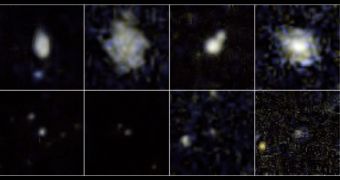Since astronomers first discovered supernova events and dwarf galaxies, they were surprised to learn that a very large portion of these tremendously energetic explosions were occurring in the smallest galaxies around. Scientists behind a new study believe they are close to figuring out why this is.
They are using the NASA Galaxy Evolution Explorer (GALEX) for the job. This is a space telescope that the American space agency launched back in 2003. It conducts studies in ultraviolet wavelengths.
Experts believe that it's only by using this instrument that they will be able to figure out how is it that only very-low-mass galaxies appear to harbor the most intense supernovae. The latter are the end stages in the lives of certain stars.
Whenever massive stellar objects reach the end of their burning cycle and exhaust their hydrogen fuel, they violently shed their atmosphere, and then implode to produce neutron stars or black holes.
The said shedding of the atmosphere is accompanied by the release of massive amounts of radiation, as well as light in all portions of the electromagnetic spectrum. Of these, GALEX can detect those between 135 to 280 nanometers.
“It's like finding a sumo wrestler in a little 'Smart Car.' The most powerful explosions of massive stars are happening in extremely low-mass galaxies,” says NASA Galex team member Don Neill.
“New data are revealing that the stars that start out massive in these little galaxies stay massive until they explode, while in larger galaxies they are whittled away as they age, and are less massive when they explode,” he adds.
Neill holds an appointment at the California Institute of Technology (Caltech), in Pasadena, California. He was also the lead author of a paper describing the findings, which was published in the latest issue of the esteemed Astrophysical Journal
Interestingly, studies conducted by GALEX on dwarf galaxies revealed that the formations were not producing large volumes of new stars. They produced even less massive stars, of the type needed to generate supernova events.
Neill and his colleagues now propose that this is why the violent explosions appear in dwarf galaxies more often than not. He says that the atmospheres around these bodies contain less heavy atoms than the atmosphere around massive stars in larger galaxies.
This literally allows these stellar objects to reach the end of their burning cycle with a lot more mass than normal. “These stars are like heavyweight champions, breaking all the records,” Neill explains, adding that the intensity of a supernova blast is directly related to the mass of the star that produced it.

 14 DAY TRIAL //
14 DAY TRIAL //